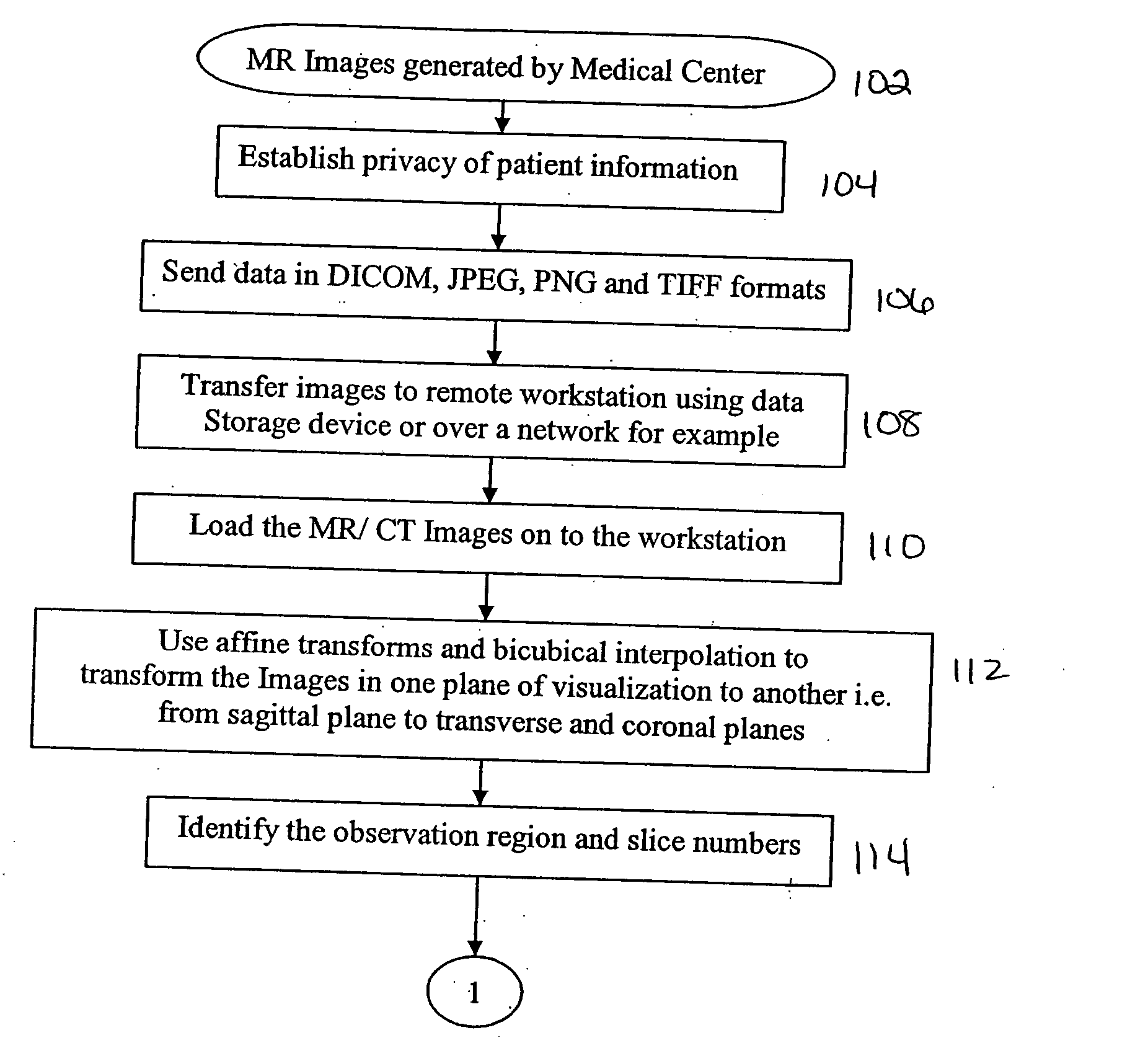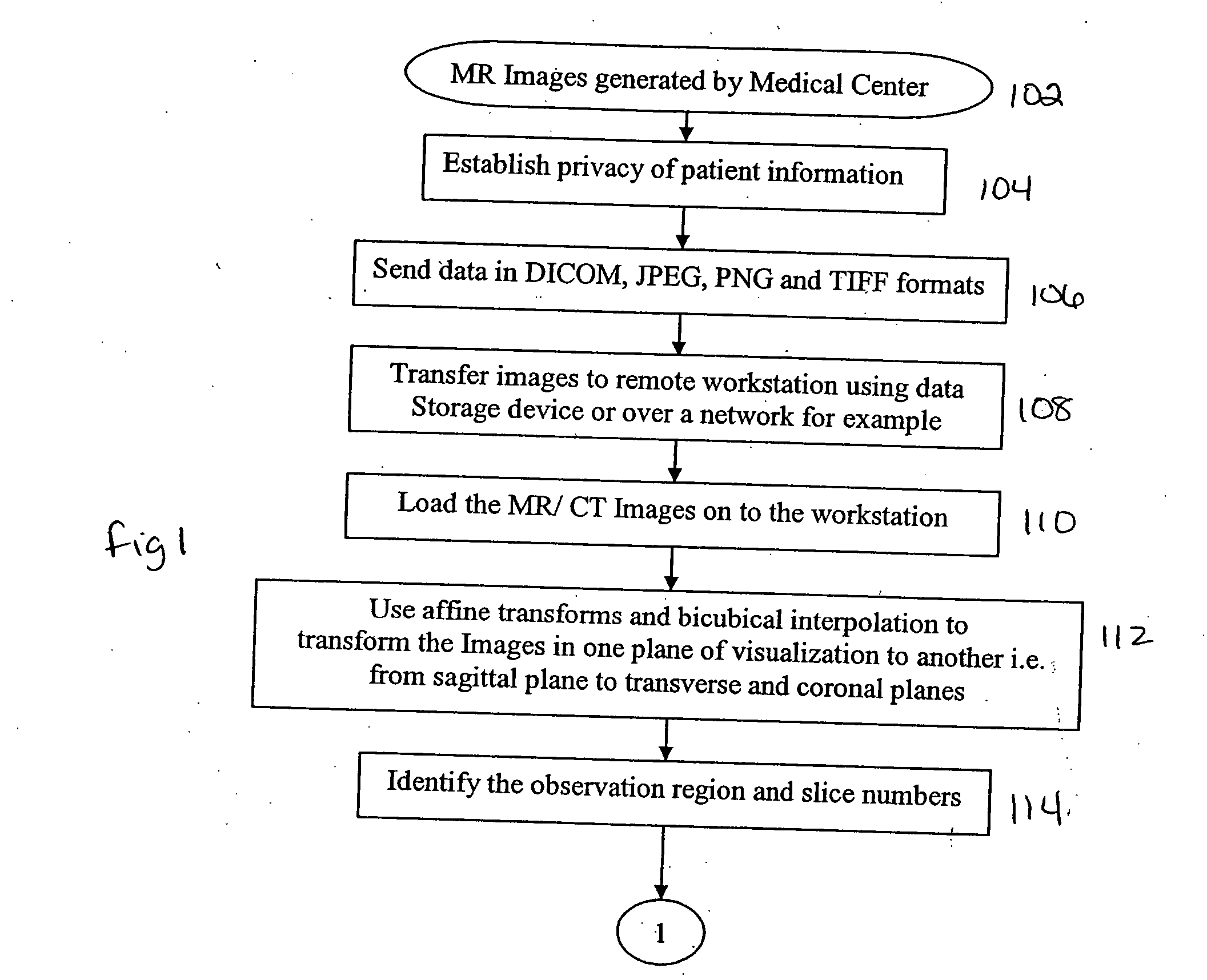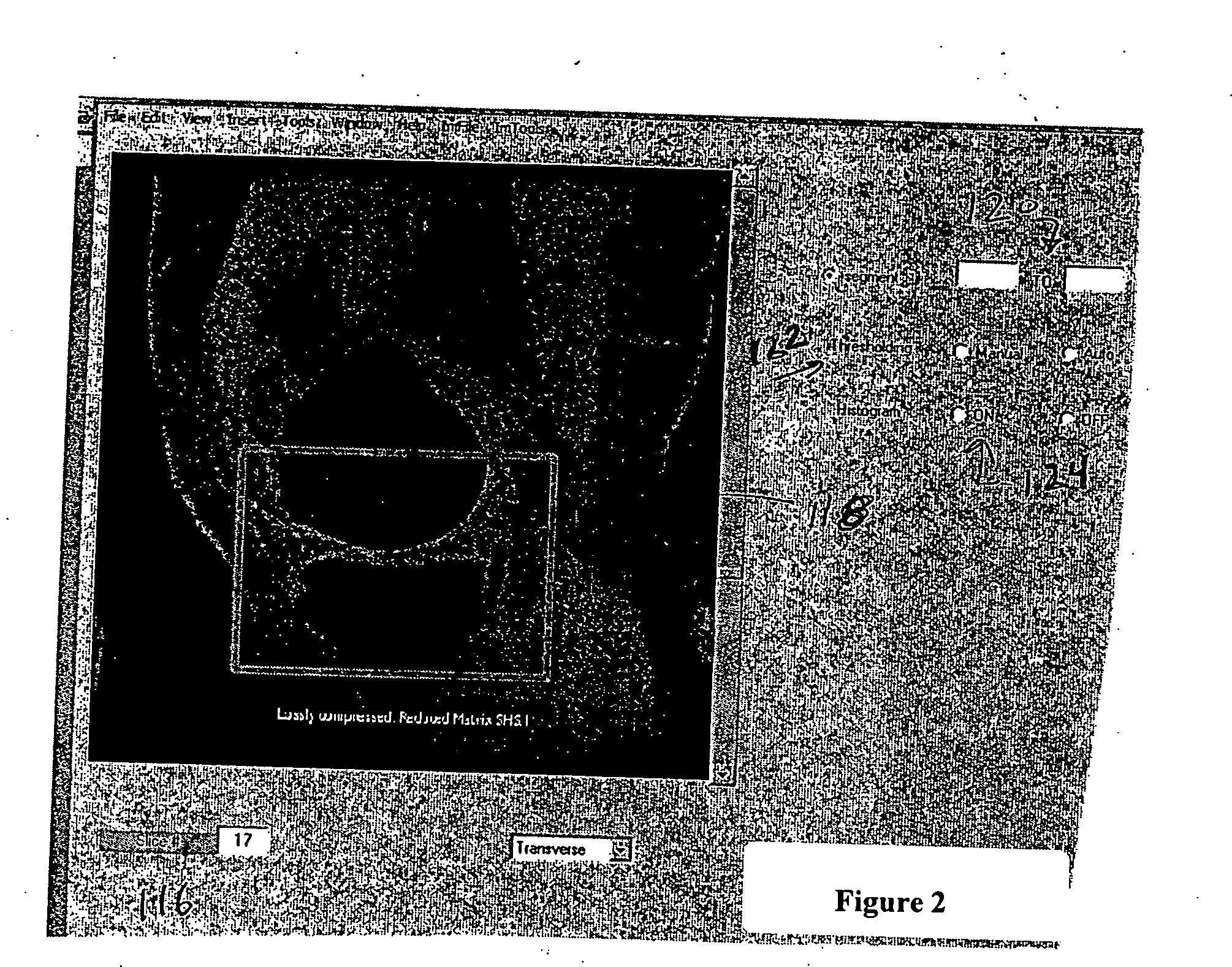Radiographic imaging display apparatus and method
a technology of radiographic imaging and display apparatus, which is applied in the field of medical imaging, can solve the problems of not producing lesions, diseased tissue or lesion occult, and current imaging techniques that are not suitable for removing obscuring features
- Summary
- Abstract
- Description
- Claims
- Application Information
AI Technical Summary
Problems solved by technology
Method used
Image
Examples
Embodiment Construction
[0039] The following description of the preferred embodiment(s) is merely exemplary in nature and is in no way intended to limit the invention, its application, or uses. 0371FIG. 23 is a block diagram of the medical imaging system. Image production center 10 is any radiographic facility obtaining digitized medical images including without limitations MRIs, CT scans, ultrasounds, PET scans and the like. A work station 12 is connected to the image production center 10 over any computer network, for example, the internet. At work station 12 the imaging algorithms described below are implemented 14. Again via computer network, be it an internet or intranet, the reprocessed medical images produced by the algorithms of the present invention are returned to a server 16 disposed to provide the processed image for user examination. A compiler may be associated with the work station or an intermediate server so that it is available to compile the data set and program from a high level languag...
PUM
 Login to View More
Login to View More Abstract
Description
Claims
Application Information
 Login to View More
Login to View More - R&D
- Intellectual Property
- Life Sciences
- Materials
- Tech Scout
- Unparalleled Data Quality
- Higher Quality Content
- 60% Fewer Hallucinations
Browse by: Latest US Patents, China's latest patents, Technical Efficacy Thesaurus, Application Domain, Technology Topic, Popular Technical Reports.
© 2025 PatSnap. All rights reserved.Legal|Privacy policy|Modern Slavery Act Transparency Statement|Sitemap|About US| Contact US: help@patsnap.com



